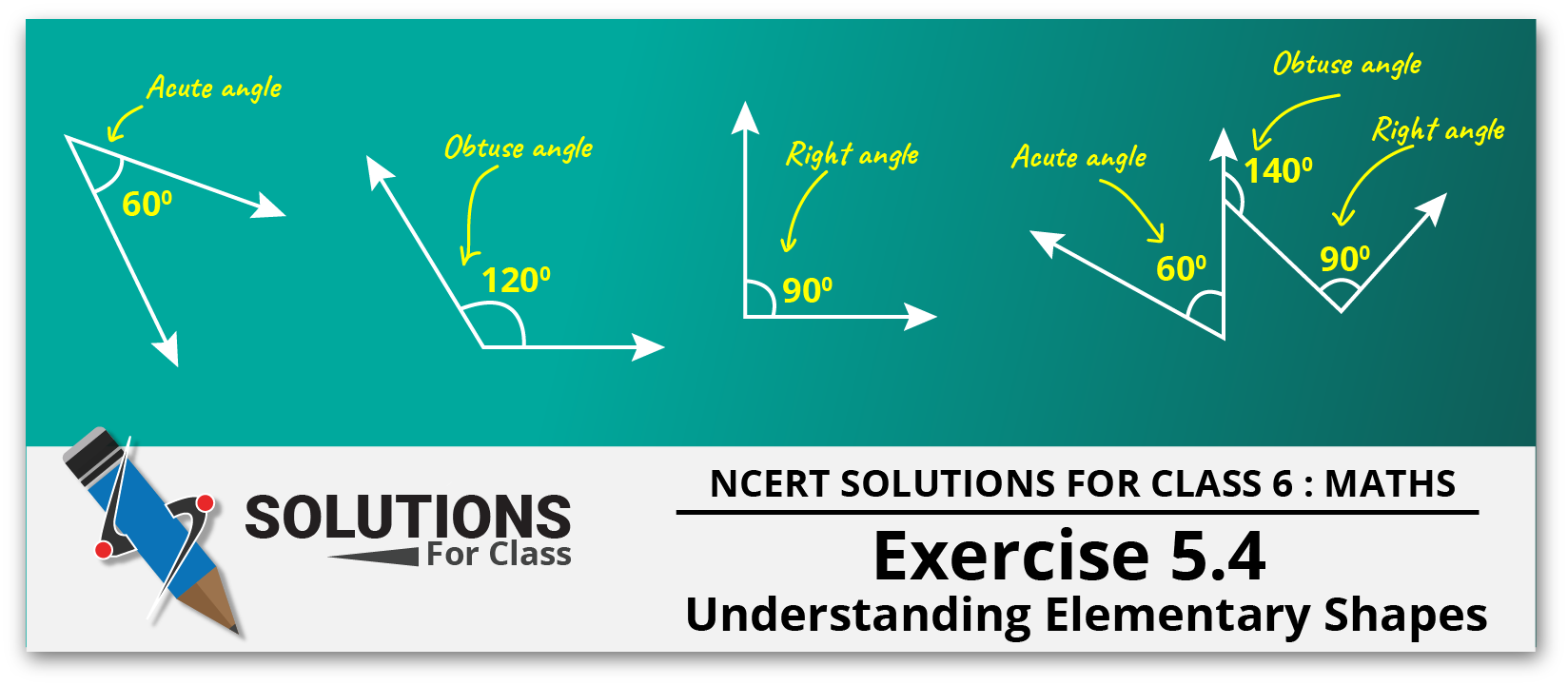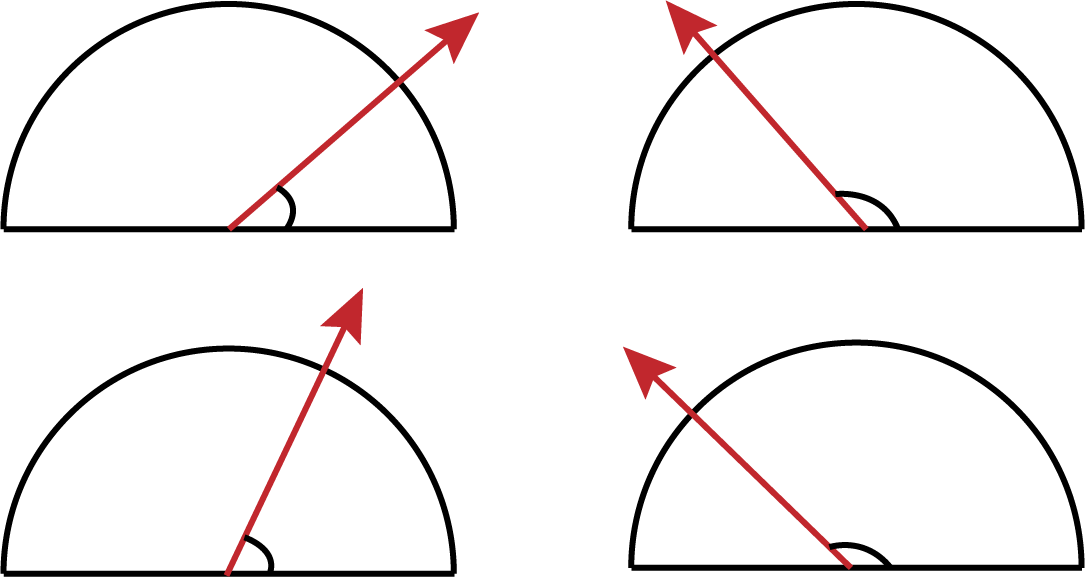
Table of Contents
ToggleNCERT Solutions for class 6, Maths chapter 5 has basic learning concepts of various shapes. This class 6 maths exercise 5.4 is about knowledge of different types of angles. The different types of angles can be understood with the help of minute hand of clock which makes different types of angles. The questions in this exercise named as Understanding Elementary Shapes, Exercise 5.4 given below.
Understanding Elementary Shapes, Exercise 5.4
Q.1. What is the measure of (i) a right angle? (ii) a straight angle?
Ans:

Q.2. Say True or False:
(a) The measure of an acute angle < 90°.
(b) The measure of an obtuse angle < 90°.
(c) The measure of a reflex angle > 180°.
(d) The measure of one complete revolution = 360°.
(e) If m ∠A = 53° and m ∠B = 35°, then m ∠A > m ∠B.
Ans: (a) True, the measure of an acute angle is less than 900
(b) False, the measure of an obtuse angle is more than 900 but less than 1800.
(c) True, the measure of a reflex angle is more than 1800.
(d) True, the measure of one complete revolution is 3600.
(e) True, ∠A is greater than ∠B.
Q.3. Write down the measures of
(a) some acute angles. (b) some obtuse angles.
(give at least two examples of each).
Ans: (a) The measures of an acute angle are 400, 200.
(b) The measures of obtuse angle are 1100, 1250.
Q.4. Measure the angles given below using the Protractor and write down the measure.

Ans: (a) The measure of an angle is 450.
(b) The measure of an angle is 1200.
(c) The measure of an angle is 900.
(d) The measures of an angles are 600, 900 and 1400.
Q.5. Which angle has a large measure? First estimate and then measure.
Measure of Angle A =______ and Measure of Angle B =______.

Ans: The measure of angle A = 400
The measure of angle B = 700
Clearly , ∠B has a large measure than ∠A.
Q.6. From these two angles which has larger measure? Estimate and then confirm by measuring them.

Ans: The measures of these angles are 450 and 600.
Since, 600 > 450
Hence, angle shown in second figure is greater than first figure.
Q.7. Fill in the blanks with acute, obtuse, right or straight :
(a) An angle whose measure is less than that of a right angle is______.
(b) An angle whose measure is greater than that of a right angle is ______.
(c) An angle whose measure is the sum of the measures of two right angles is _____.
(d) When the sum of the measures of two angles is that of a right angle, then each one of them is ______.
(e) When the sum of the measures of two angles is that of a straight angle and if one of them is acute then the other should be _______.
Ans: (a) Acute angle
(b) Obtuse angle
(c) straight angle
(d) Acute angle
(e) Obtuse angle.
Q.8. Find the measure of the angle shown in each figure. (First estimate with your eyes and then find the actual measure with a protractor).

Ans: The measures of the angles shown in above figure are 400, 1350, 650 and 1400.
Q.9. Find the angle measure between the hands of the clock in each figure:

Ans: (a) 900 (Right angle)
(b) 300 (Acute angle)
(a) 1800 (Straight angle)
Q.10. Investigate, In the given figure, the angle measures 30°. Look at the same figure through a magnifying glass. Does the angle becomes larger? Does the size of the angle change?

Ans: No, the measure of angle will be same by viewing through a magnifying glass.
Q.11. Measure and classify each angle:


Ans:

Chapter 5 : Understanding Elementary Shapes
Understanding Elementary Shapes, Exercise 5.1
Understanding Elementary Shapes, Exercise 5.2
Understanding Elementary Shapes, Exercise 5.3
Understanding Elementary Shapes, Exercise 5.4
Understanding Elementary Shapes, Exercise 5.5
Understanding Elementary Shapes, Exercise 5.6
Understanding Elementary Shapes, Exercise 5.7

